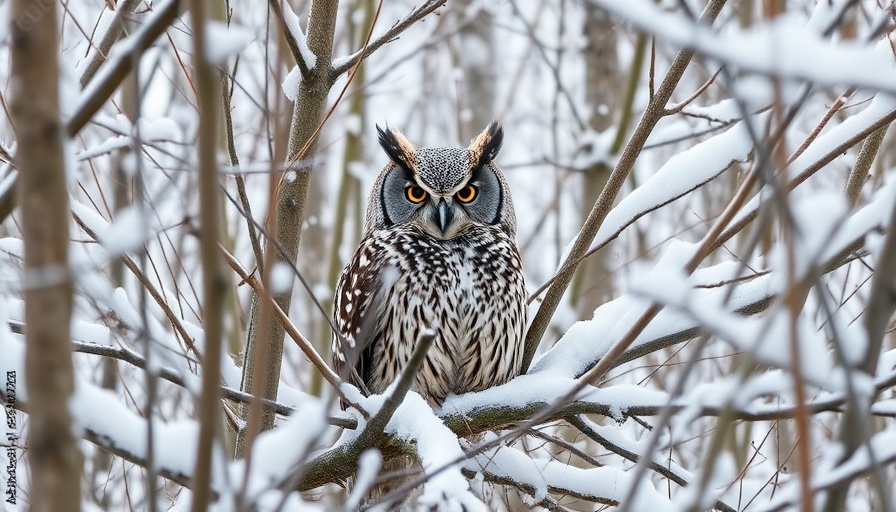
The Enigmatic Nesting of Great Horned Owls
High in the branches of a leafless cottonwood tree, a female Great Horned Owl dutifully incubates her eggs. The scene is picturesque yet stark; a light snowfall blankets her back, while her mate remains hidden nearby, watching vigilantly. This captivating sight prompts many to ponder: Why would these magnificent birds choose the harsh winter months to nest?
The Practicality of Winter Nesting
Great Horned Owls, known for their striking silhouette and iconic tufted ears, have a unique nesting strategy that sets them apart from many other birds. Unlike their feathered counterparts who time their breeding seasons with the warmth of spring, these resilient owls begin their families when temperatures drop. Their timing is strategic; the owlets will hatch after approximately a month of incubation, requiring care from their parents throughout the chilly months and well into the summer. This extended dependency allows young owls to refine their hunting skills long before facing the rigors of another winter.
Natural Adaptation: Survival of the Fittest
Why risk nesting during the most severe weather? The answer lies in the owls' adaptation to their environment. This strategy allows Great Horned Owls to exploit available resources efficiently. Their impressive hunting skills and diverse diet enable them to thrive in various habitats, spanning from the northern forests of Canada to the southernmost regions of the world. The winter nesting cycle is a testament to their resilience and mastery of survival.
Observing the Great Horned Owls
For those intrigued by avian behavior, winter presents a unique opportunity to observe these majestic creatures in action. The Great Horned Owls' nocturnal calls echo through the night, a hauntingly beautiful reminder of nature's rhythms. Birdwatchers and enthusiasts can take a moment to listen for the distinctive hooting pairs, a chorus that signals both territorial unity and the beginning of a family.
Engage With Nature
The story of the Great Horned Owl is more than just about adaptation; it’s a narrative rich with lessons about resilience and survival in the ever-changing natural world. As temperatures drop and winter approaches, take a moment to appreciate the remarkable adaptations of these noble birds. Whether through direct observation or simple reflection, engaging with nature brings an invaluable perspective to our lives.
 Add Row
Add Row  Add
Add 




Write A Comment